-
Posts
1,781 -
Joined
-
Last visited
-
Days Won
8
Content Type
Profiles
Forums
Blogs
Gallery
Events
Store
Posts posted by azyeoman
-
-
Every time I see these, I'm struck by the colors and the fantastic workmanship that went into making things back then.
0 -
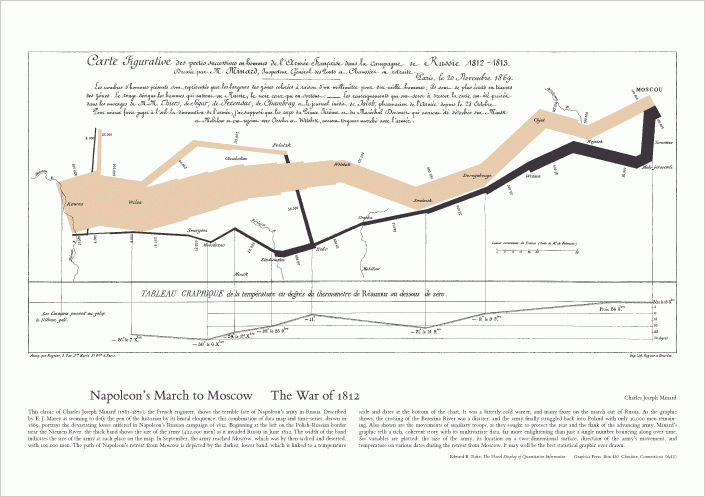
In my humble opinion the medal and particularly the brevets are highly under appreciated. When you consider that Besnier on page six started off as one of the 422,000 men who invaded Russia in 1812 and then was one of the 10,000 who returned and then one of those who lived a further 45 years to receive his St. Helene medal, it's just amazing. Charles Joseph Minard's statistical graph is a landmark in statistical graphics. It will show you the fate of Napoleon's army and how rare the little document to Besnier is. He may have "only" been in the supply train, but he was there and lived to tell the tales.
0 -
Hello, Love4history.
First thank you for the input; it's good to get as much info as possible. I have seen where he died during the war or shortly after as you've said, but how can I confirm that? : ) Any and all help is greatly apprecaited.
Cheers,
0 -
There is a wonderfull exhibition in "De IJzertoren, Diksmuide, Belgium" about this topic. I believe till end august 2013.
Jef
Absolutely right; a wonderful exhibit. Thank you very much for posting this; great photos and text.
0 -
Thanks. All my ancestors save one fought for the Confederacy; Out of 22 Civil War ancestors, one fought for the Union (he was from Missouri) and the rest were from Arkansas and fought for the South. Two were taken prisoner at Ft. Hudson, LA and one deserted and went west to Arizona. Living in AZ, I'm interested in the Indian Campaigns and wonder how many of the men stationed out here were initially in the CSA?
0 -
Don't think they needed the Lord's Prayer during the maneuvers. ; ) I know there is a different one out there and if my memory doesn't fail me, it has an orange and black ribbon. I hope someone has one to share.
0 -
I wonder how many men on both sides lost their faith during the war(s)? I suspect many then and now did and have. Are there any "skypilots" or padres on the site who can address this???
0 -
Glavanized Yankees were not required to fight against their kin. They were sent to the West to fight injuns.
That's very interesting. Where did you get that fact? I'd like to read up more on that. Thanks in advance! : )
0 -
Here's one, but it's NOT the one I remember as it was suspended from a ribbon rather than this style, which is reminiscent of a state Mexican Border War commemorative medal.

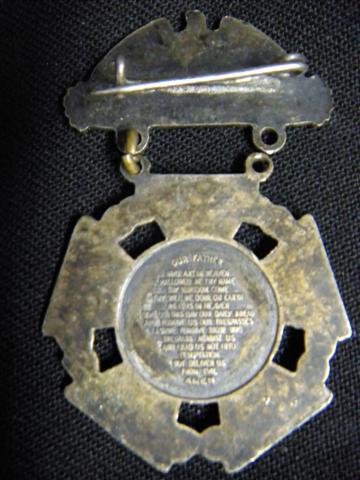 0
0 -
There is a Louisiana Maneuver medal? A period commemorative? Or some modern souvenir?
It was a period piece and I suspect "awarded" to those who took part in it. It was pre-WWII and quite nicely minted; it was quality piece. Of course it wasn't official, but it was nice.
0 -
Nice thread. I've seen at least one manouvers medal over the years. Can anyone upload that for all to see? : )
0 -
Here's another nice thread on GMIC with some wonderful photos.
http://gmic.co.uk/index.php/topic/45237-medaille-de-sainte-helene-second-empire/
0 -
Here's a wonderful site with much information and if you're lucky, perhaps you'll find a photo of the Napoleonic veteran whose brevet graces your collection.
http://www.stehelene.org/php/accueil.php?page=1&lang=en
Here's what you can find on an individual. The example is for No. 10 above
0 -
Condor Legion groups are so colorful. The White Military Merit is quite unusual to find mounted on a bar.
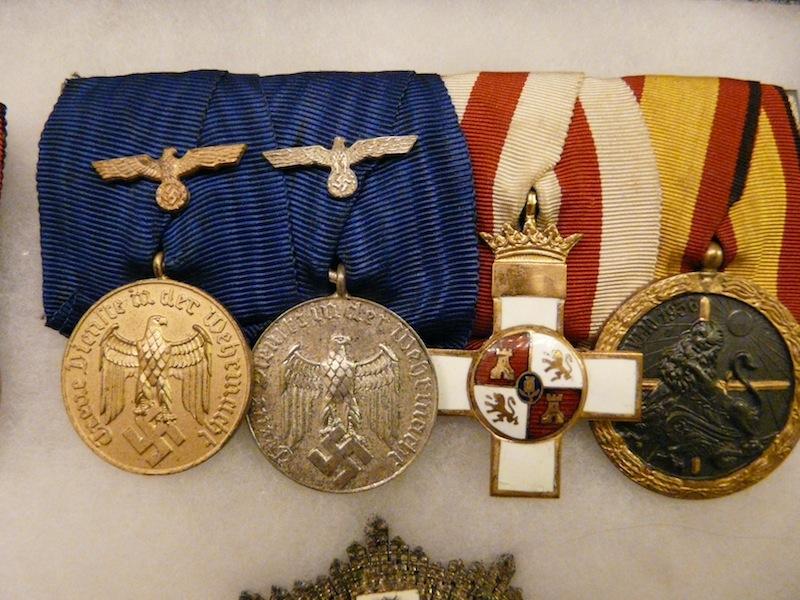 0
0 -
Another trio with a tailor's label.
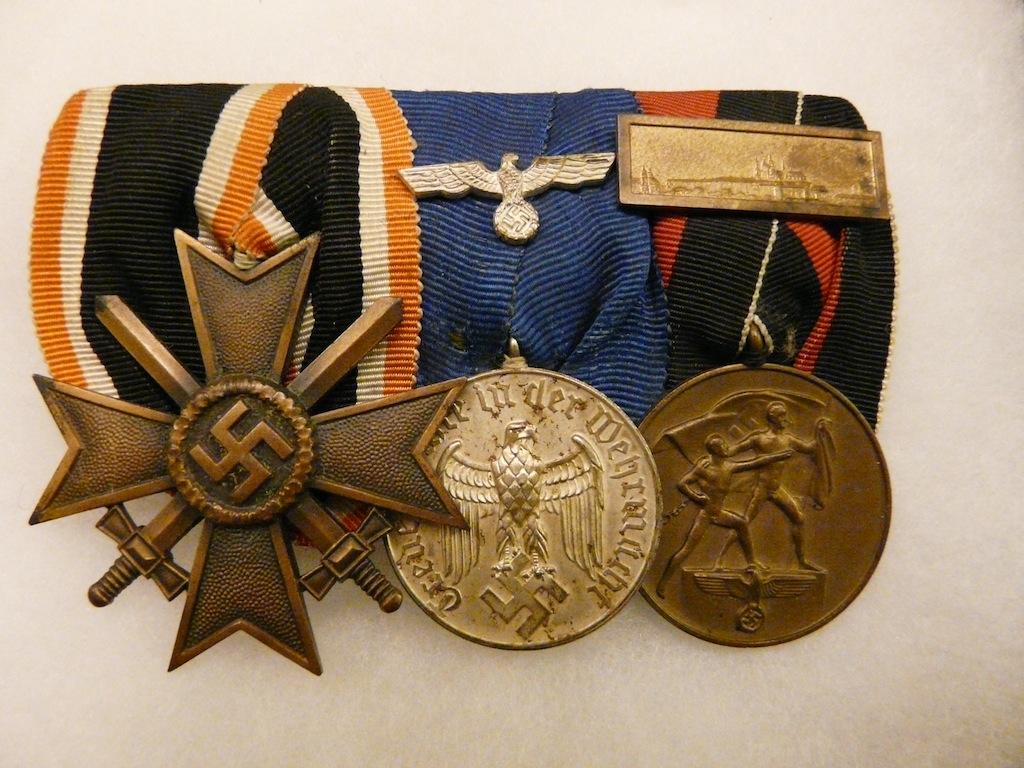
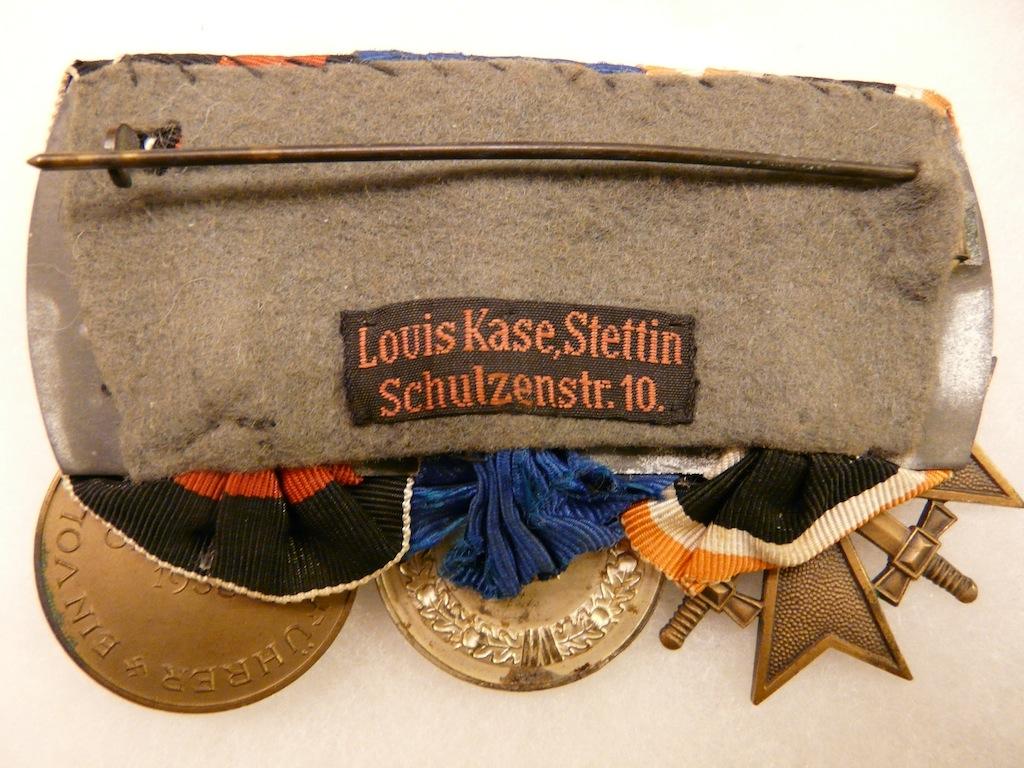 0
0 -
With a nice tailor's label and matching ribbon bar.
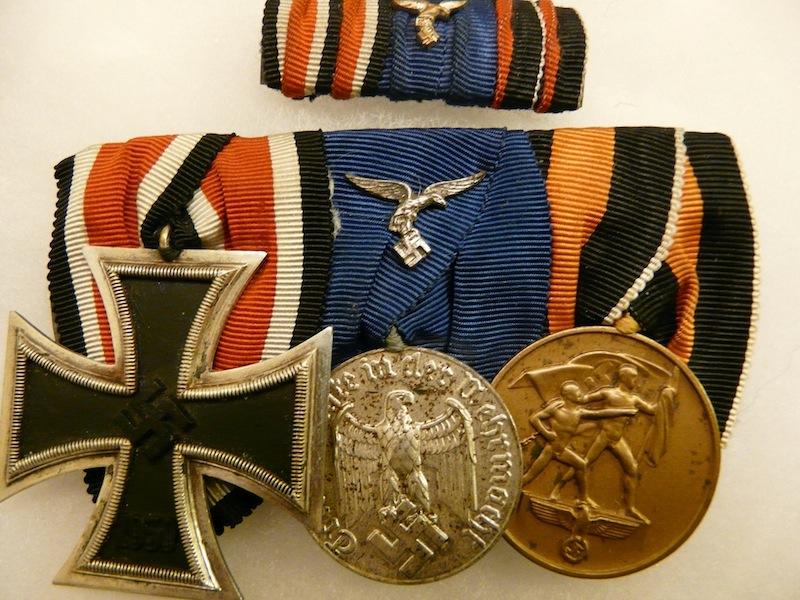
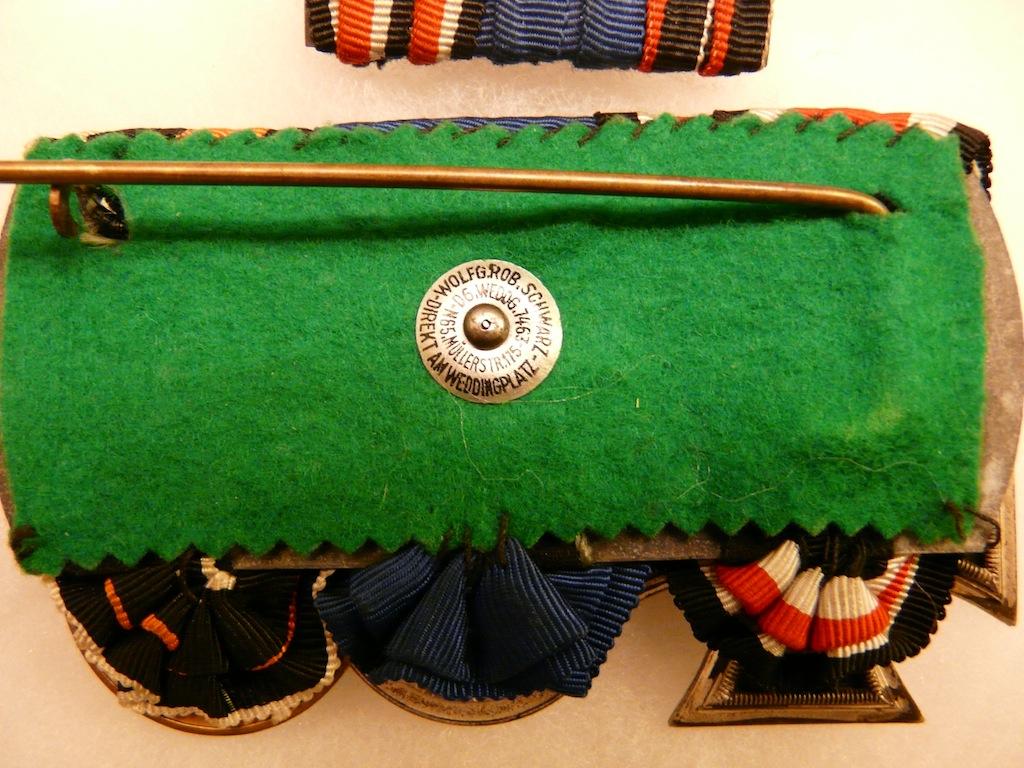 0
0 -
Obverse of another with a Romanian medal.
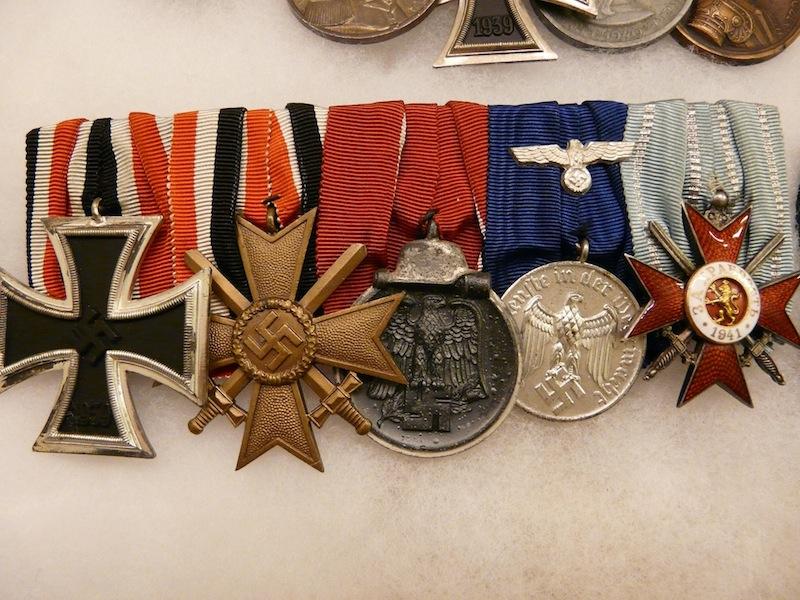 0
0 -
Nice!! You will have to start a thread on the St Helene medals! I have never really seen anything from there.
Here you go... ; ) http://gmic.co.uk/index.php/topic/57195-paper-worth-more-than-metal-st-helene-brevets/?p=530538
0 -
Another to Pierre Louis Fasil (289,810) of the 36e Ligne. It hailed from Anjou and was started on 1 January 1794. The 36th fought at Jemmapes in 1793, Zurich in 1799, Austerlitz in 1804 and Jena in 1805.
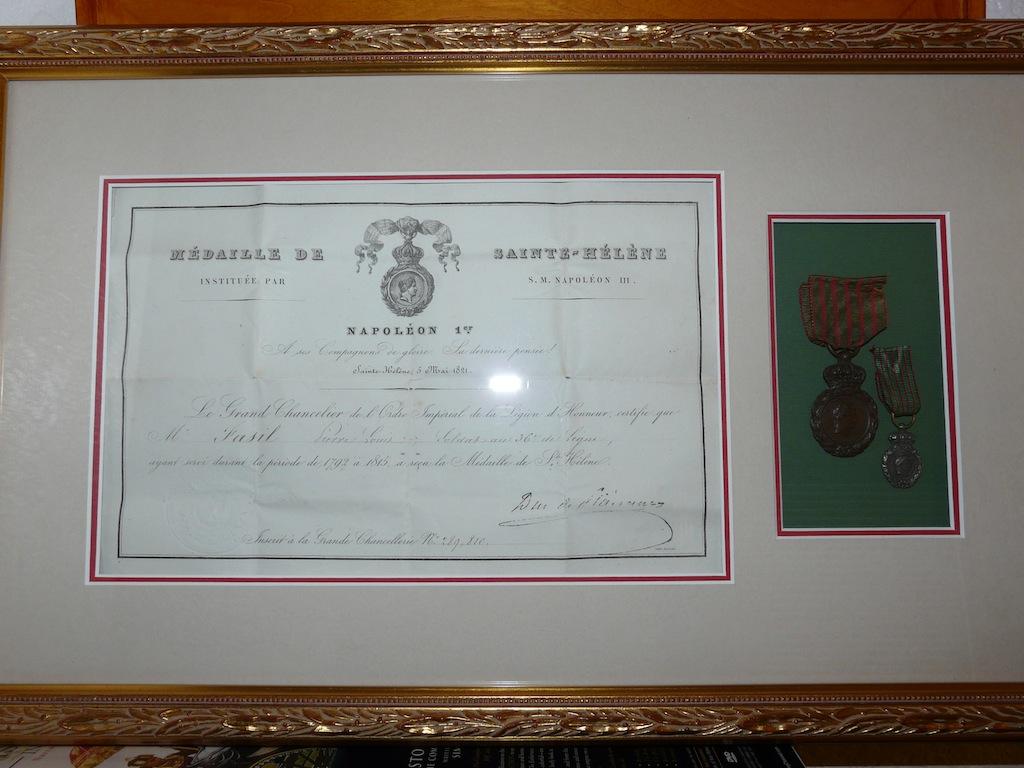
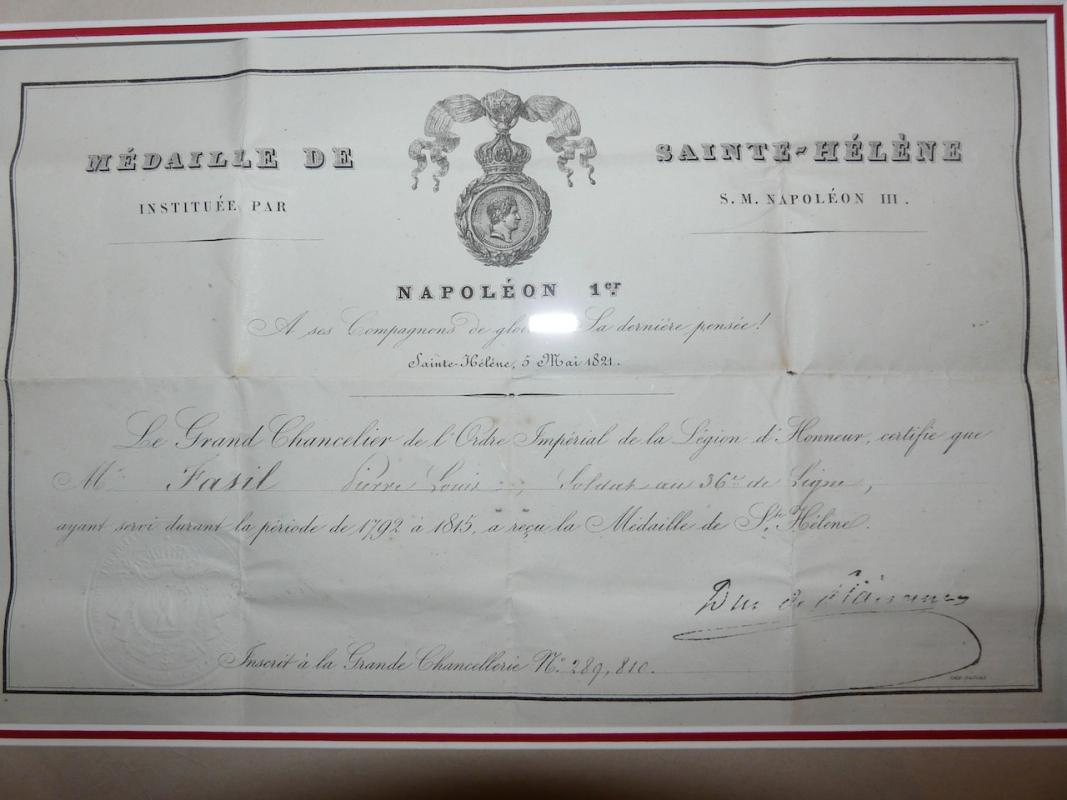 1
1 -
A contemporary etching.
 0
0 -
Jean Jacques Bridron (23,388) who served with the 101st line infantry.
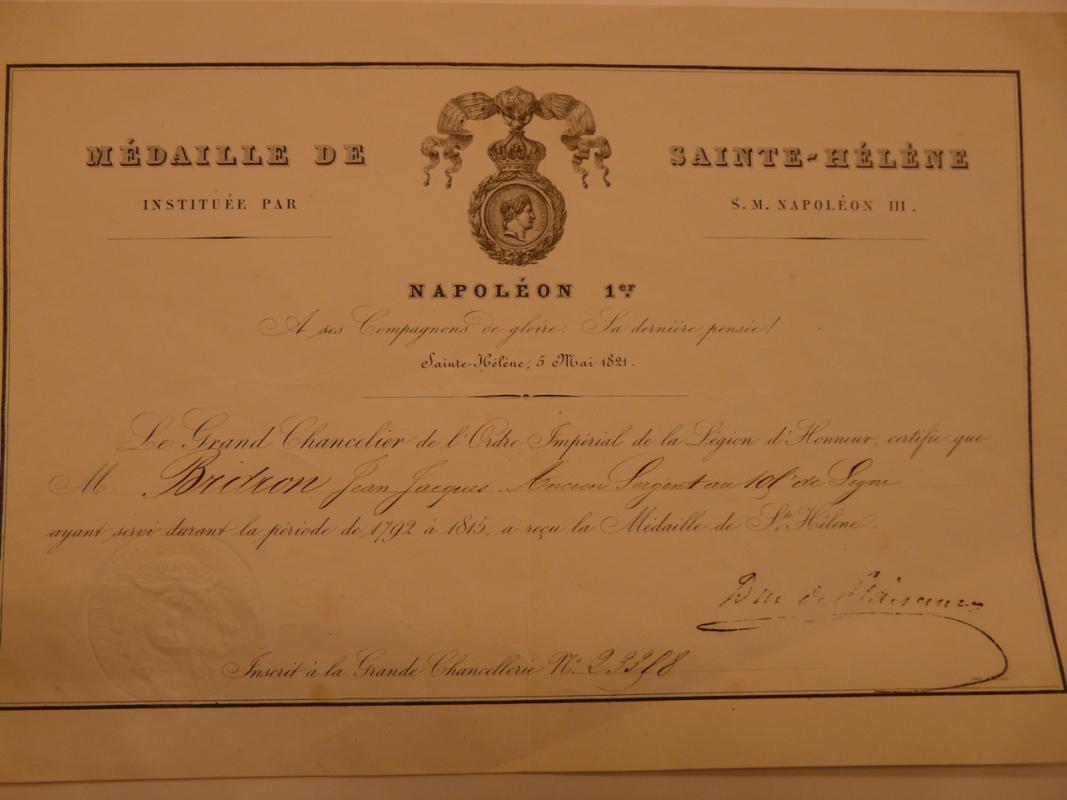 1
1 -
Jean Baptist Petitot (39,190) who served with the 93eme Ligne.
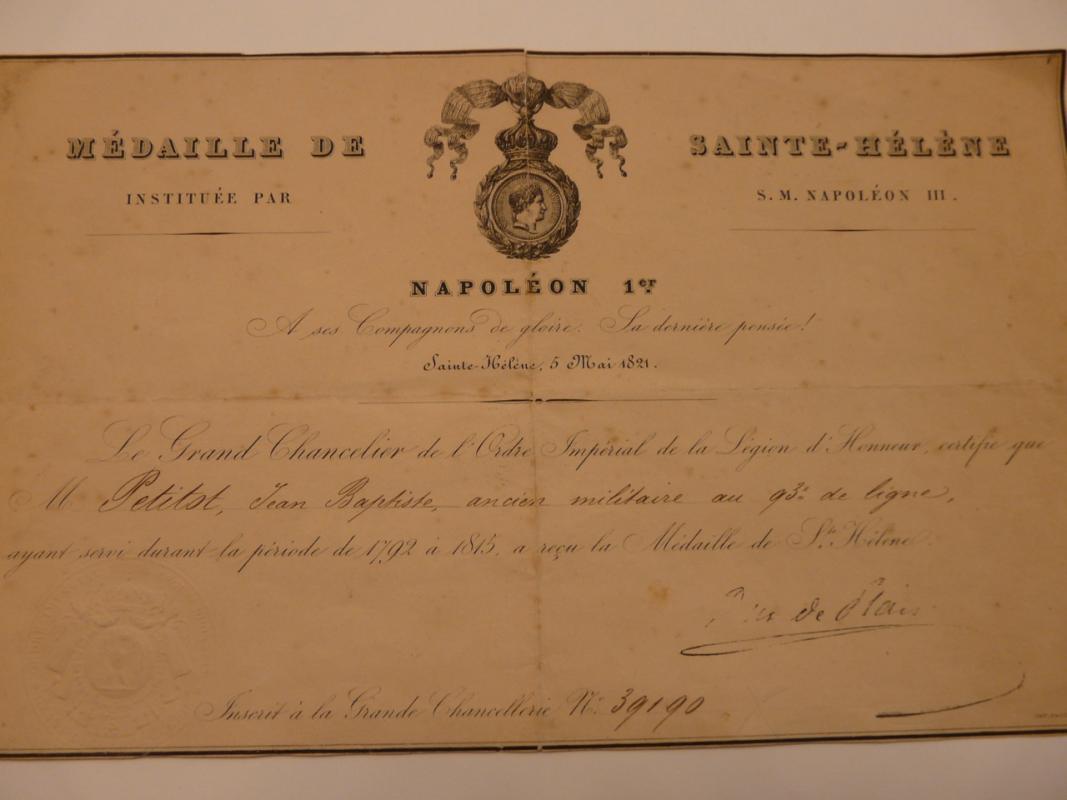 1
1 -
Augustin Besnier (129,428) of the 2eme regt. du Train d'equipage. The train was created on 26 March 1807 with eight battalions "des equipages des transports militaires. It was reorganized with four escadrons on 14 October 1814. The 2eme took part in the invasion of Russia; only ten thousand out of the original 422 thousand men returned and so this is quite rare as so few would have lived a further 45 years longer to receive their medals in 1857.
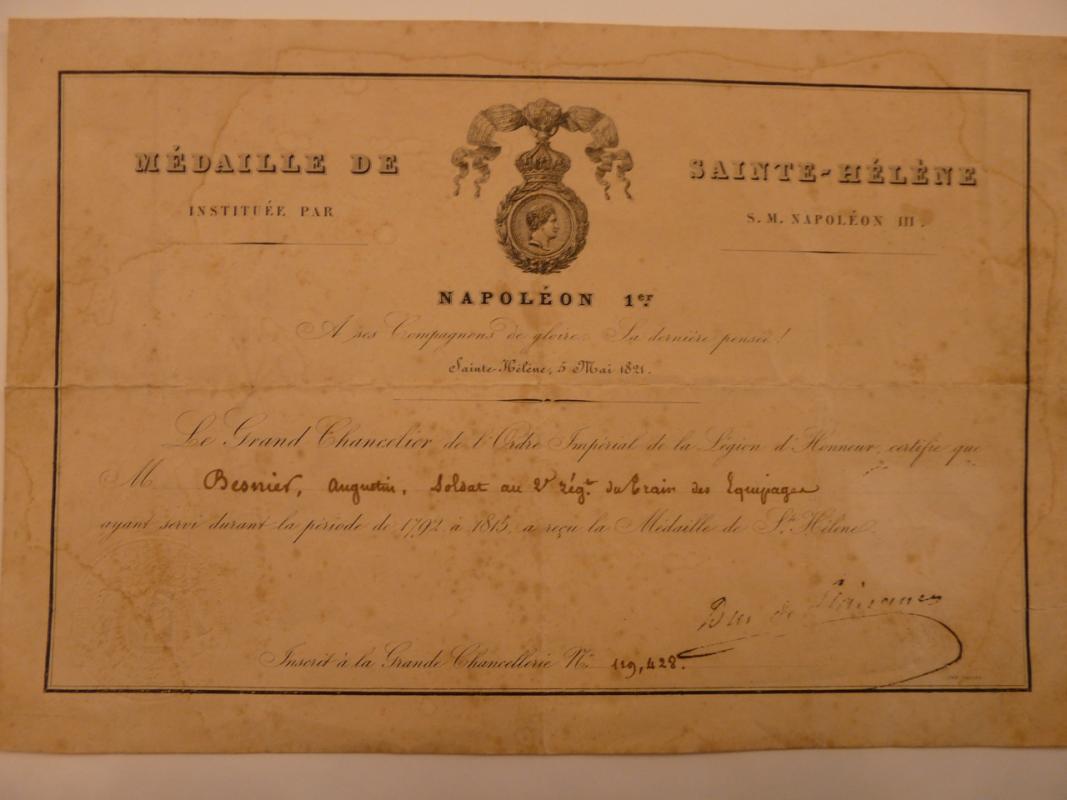 1
1 -
Exceptionally rare brevet to a sailor, Raymond Marcombe (213,494) who served on the Niemen in an action which ended up with her being taken as a prize ship by HMS Amethyst. This was a real Hornblower type of action.
5-6 Apr 1809 Amethyst chased and captured the French 40-gun frigate Niemen, with the assistance of the Emerald. The Niemen became a great acquisition to the British navy under her French name. Read the account in William James' Naval History of Great Britain by clicking on the date of the action.
Niémen was built by Chantier Courau Frères at Bordeaux to a design by Pierre Rolland, carrying 40 guns. She was launched in 1808 but spent only months in French service. She was commissioned at Bordeaux on 22 November 1808, but not completed until January 1809. On 4 April 1809 she sailed under the command of Commandant Jean Dupotet for Fort-de-France with stores and a substantial crew of 319.
Two days later, as she was she was in the Bay of Biscay, she encountered three British vessels, including the 36-gun frigate HMS Amethyst, under the command of Captain Sir Michael Seymore. Also sailing in company with Amethyst were the 36-gun HMS Emerald, (Captain Frederick Lewis Maitland), and the 38-gun JMS Arethusa, (Captain Robert Mends).
Seymour, who had previously won fame by capturing the French frigate Thétis the previous November, gave chase at 11am. After a sustained chase lasting all day, the Amethyst lost sight of the Emerald, which could not match the speed of the two others, and had failed to gain on the Niémen. Seymour then wore his ship around and was able to bring himself close to the Niémen at 9.30pm.
The two ships began exchanging fire at 11.30pm, with Amethyst coming alongside at 1am on the morning of 5 April to exchange sustained broadsides. By 3am theNiémen had lost her main and mizzen masts, and her fire was slackening. The Arethusa then arrived on the scene, firing a couple of broadsides at the badly damaged French ship. At this point Niémen surrendered. Other accounts report that during the night, Niémen maneuvered to capture Amethyst, when Arethusa came to the rescue and forced Niémen to strike her colours.
Regardless, Niémen had surrendered, having lost 47 killed and 73 wounded, compared to eight killed and 37 wounded on the Amethyst. Sir Michael brought her in as a prize, and was rewarded with a baronetcy for his actions in capturing the Niémen, and the earlier capture of the Thetis. In 1847 the Admiralty authorized the issue of the Naval General Service Medal with clasp "Amethyst 5 April 1809" to be awarded upon application to all British participants still living in 1847. (Wikepedia)
 1
1



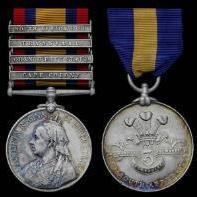
Bavarian Bars... Show Yours!
in Germany: Imperial: The Orders, Decorations and Medals of The Imperial German States
Posted
Here's one with a nice Godet tailor's label.